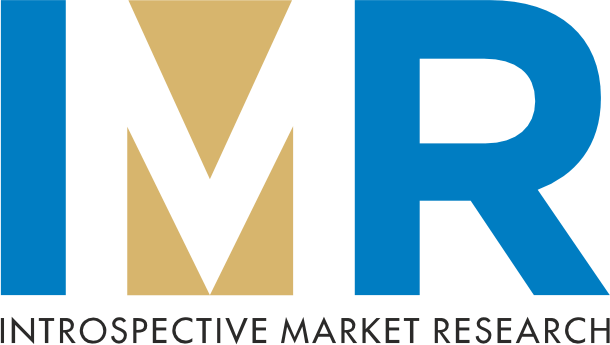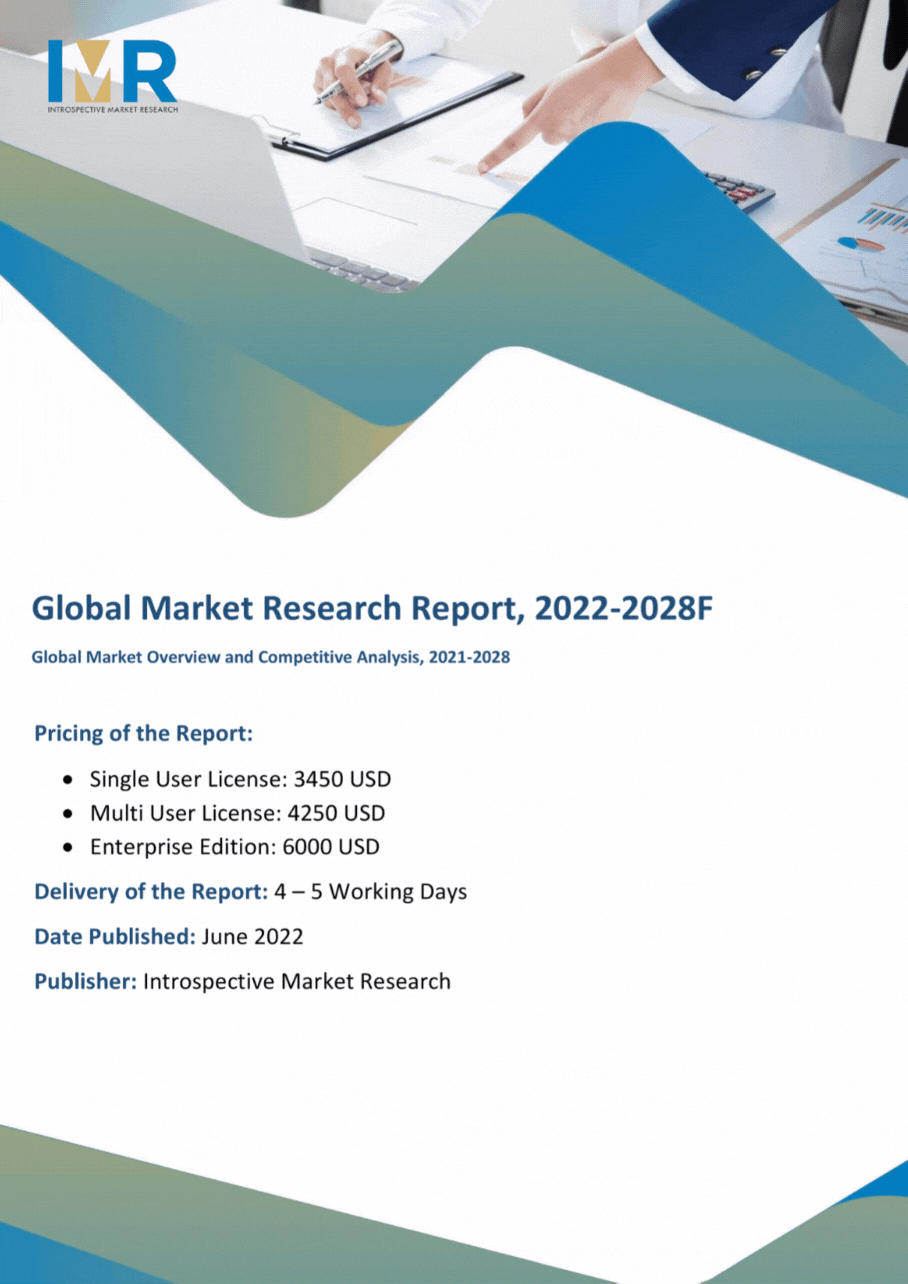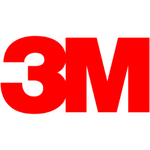Fuel Cell Market Synopsis
Fuel Cell Market size was valued at USD 23.21 Billion in 2023 and is projected to reach USD 185.78 Billion by 2032, growing at a CAGR of 26% from 2024 to 2032.
A fuel cell is an electrochemical cell that converts the chemical energy of a fuel (often hydrogen) and an oxidizing agent into electricity through a pair of redox reactions. Fuel cells are different from most batteries in requiring a continuous source of fuel and oxygen (usually from air) to sustain the chemical reaction, whereas in a battery the chemical energy usually comes from substances that are already present in the battery.
Fuel cells can produce electricity continuously for as long as fuel and oxygen are supplied. Fuel cells operate based on the principle of electrochemical reactions. They consist of two electrodes: an anode (negative electrode) and a cathode (positive electrode) separated by an electrolyte.
Fuel cells can achieve high energy conversion efficiency, especially in combined heat and power (CHP) applications. They produce minimal or no emissions, depending on the fuel source. Fuel cells offer a promising alternative to conventional combustion-based power generation methods, with the potential to reduce greenhouse gas emissions and reliance on fossil fuels in various applications.

Fuel Cell Market Trend Analysis
Stringent Global Regulations On Carbon Emissions
- In the face of growing concerns about climate change and the adverse environmental impacts of greenhouse gas emissions, countries worldwide have been implementing increasingly strict regulations aimed at curbing carbon emissions. These stringent global regulations on carbon emissions have emerged as a powerful catalyst for the growth and development of the fuel cell market. Fuel cells, with their high energy efficiency and minimal emissions, are well-positioned to play a pivotal role in meeting these regulatory requirements and driving sustainable energy solutions.
- With political leaders across the globe coming together to reduce their country’s carbon footprint and signing of the Paris Agreement has given a boost to green and renewable technologies to set themselves in markets. Fuel cells being a non-emission solution for power generation fit the category of green and renewable technologies and is growing owing to the carbon emission norms.
- One of the most significant areas where stringent carbon emission regulations have influenced the adoption of fuel cells is transportation. Governments and regulatory bodies worldwide have been implementing policies to reduce carbon emissions from vehicles. Electric vehicles (EVs) powered by hydrogen fuel cells, known as fuel cell vehicles (FCVs), have emerged as a promising solution. FCVs offer longer driving ranges and shorter refueling times compared to battery-electric vehicles. Additionally, they produce no tailpipe emissions, making them a compelling choice for achieving emission reduction targets.
Technological Advancement and Increasing Commercial Infrastructural Projects
- The fuel cell market is experiencing a significant upswing due to a confluence of factors, among which technological advancements and the propagation of commercial infrastructural projects stand out as major opportunities. As industries and governments worldwide seek cleaner and more efficient energy solutions, fuel cells are poised to play a pivotal role in addressing the growing demand for sustainable power generation and transportation.
- Germany’s H2Mobility program is supporting the adoption of fuel cell vehicles by developing fueling stations, which in turn, opens up opportunities for the deployment of fuel cells. Moreover, Europe's Hydrogen for Innovative Vehicles (HyFIVE) project aims to expand its hydrogen fuel cell network, developing stations in Italy, the United Kingdom, Austria, and Denmark.
- The energy landscape is evolving with a growing emphasis on clean and decentralized power generation. Fuel cells, especially in combined heat and power (CHP) configurations, are increasingly being integrated into commercial buildings, data centers, and industrial facilities. These projects offer a reliable and eco-friendly source of on-site electricity and heat.
- The development of hydrogen infrastructure is gaining momentum as governments and private entities invest in the construction of hydrogen refuelling stations. This infrastructure expansion is essential to support fuel cell vehicles (FCVs), especially in commercial fleets and public transportation.
Fuel Cell Market Segment Analysis:
The Fuel Cell market segments cover by Type, Application, Size, End User. By Type, the PEMFC segment is Anticipated to Dominate the Market Over the Forecast period.
- The demand for PEMFC is higher owing to various benefits over other types. Benefits, such as flexibility in input fuel, compact design, lightweight, low cost, and solidity of electrolyte, will aid market escalation.
- PEMFC is widely used in applications such as forklifts, automobiles, telecommunications, primary systems, and backup power systems. Versatility is a significant factor that bolsters their demand in the forecast period.
- PEMFCs are known for their high energy conversion efficiency, typically ranging from 40% to 60%. This means they can convert a significant portion of the chemical energy in their fuel source (usually hydrogen) into electricity. This efficiency is particularly attractive in various applications where energy efficiency is crucial, such as automotive and portable power generation.
- PEMFCs operate at relatively low temperatures compared to other fuel cell types, typically around 80-100°C. This low operating temperature allows for a more straightforward thermal management system and reduces the risk of damage to materials, contributing to their durability and reliability. These factors driving the growth of PEMFCs segment during forecast period.
Fuel Cell Market Regional Insights:
Asia Pacific is Expected to Dominate the Market Over the Forecast period.
The Asia-Pacific solid oxide fuel cell (SOFC) market is expected to reach $412 million USD by 2023, highlighting its significant position in the worldwide arena. Government initiatives, particularly in Japan, South Korea, and China, are critical in driving SOFC adoption. Reduce emissions, increase energy security, and accelerate technological advancement are the goals of these initiatives. The district's fast financial extension and industrialization drive up interest for proficient power arrangements, and SOFCs offer an upper hand because of their high productivity and low outflows profile. SOFCs are more suitable than customary energy sources thanks to mechanical progressions in materials, assembling, and framework plan that have worked on their presentation, solidness, and cost-viability.
Foundation improvement, especially in hydrogen creation and transport, works with SOFC working, particularly in hydrogen-fueled applications. Increased environmental awareness and rising energy demands drive SOFC use in the region. With continuing government support, technical innovation, and rising market demand, the Asia-Pacific SOFC market is primed for further expansion, solidifying its critical role in defining the global energy landscape.
Fuel Cell Market Key Players Covered
- Ballard Power Systems (Canada)
- Hydrogenics (Canada)
- Plug Power (U.S.)
- Nuvera Fuel Cells, LLC (U.S.)
- FuelCell Energy(U.S.)
- W.L. Gore & Associates (U.S.)
- Bloom Energy (U.S.)
- Nexceris LLC (U.S.)
- Bosch (Germany)
- ElringKlinger (Germany)
- SOLIDpower Italia (Italy)
- Ceres Power (U.K.)
- AVL (Austria)
- Pragma Industries (France)
- Nedstack Fuel Cell Technology (Netherlands)
- Proton Motor Fuel Cell GmbH (Germany)
- ITM Power (U.K.)
- Elcogen (Estonia)
- SFS Energy AG (Germany)
- Blue World Technologies (Denmark)
- Roland Gumpert (Germany)
- AISIN (Japan)
- Horizon Fuel Cell Technologies (Singapore)
- Mitsubishi Hitachi Power Systems (Japan)
- Convion (Finland)
Key Industry Developments in the Fuel Cell Market
- In April 2024, Ballard Power Systems announced that it had received multiple purchase orders totaling 70 FCmove®-HD hydrogen fuel cell engines from its customer Wrightbus, a UK-based bus manufacturer deploying hydrogen-powered buses in the UK and Europe. Ballard expected the delivery of the fuel cell engines to occur in 2024, and the buses to enter into service in 2025. The hydrogen fuel cell engines were planned to power single- and double-decker buses in the UK and Germany.
- In February 2024, Plug Power Inc, a global leader in comprehensive hydrogen solutions, and Uline, the prominent distributor of shipping, industrial, and packaging materials, announced an expanded partnership for the deployment of Plug's hydrogen infrastructure and fuel cell solutions at Uline's new campus in Kenosha, Wisconsin. As part of this expanded partnership, an on-site hydrogen infrastructure was integrated, which involved the installation of an 18,000-gallon hydrogen storage tank and 17 hydrogen dispensers to cater to four distribution centers within the campus. Additionally, 250 fuel cell forklifts were added to the operations, with hydrogen being generated on-site using Plug's advanced infrastructure.
|
Global Fuel Cell Market |
|||
|
Base Year: |
2023 |
Forecast Period: |
2024-2032 |
|
Historical Data: |
2017 to 2023 |
Market Size in 2023: |
USD 23.21 Bn. |
|
Forecast Period 2024-32 CAGR: |
26 % |
Market Size in 2032: |
USD 185.78 Bn. |
|
Segments Covered: |
By Type |
|
|
|
By Application |
|
||
|
By Size |
|
||
|
By Region |
|
||
|
Key Market Drivers: |
|
||
|
Key Market Restraints: |
|
||
|
Key Opportunities: |
|
||
|
Companies Covered in the report: |
|
||
- INTRODUCTION
- RESEARCH OBJECTIVES
- RESEARCH METHODOLOGY
- RESEARCH PROCESS
- SCOPE AND COVERAGE
- Market Definition
- Key Questions Answered
- MARKET SEGMENTATION
- EXECUTIVE SUMMARY
- MARKET OVERVIEW
- GROWTH OPPORTUNITIES BY SEGMENT
- MARKET LANDSCAPE
- PORTER’S FIVE FORCES ANALYSIS
- Bargaining Power Of Supplier
- Threat Of New Entrants
- Threat Of Substitutes
- Competitive Rivalry
- Bargaining Power Among Buyers
- INDUSTRY VALUE CHAIN ANALYSIS
- MARKET DYNAMICS
- Drivers
- Restraints
- Opportunities
- Challenges
- MARKET TREND ANALYSIS
- REGULATORY LANDSCAPE
- PESTLE ANALYSIS
- PRICE TREND ANALYSIS
- PATENT ANALYSIS
- TECHNOLOGY EVALUATION
- ANALYSIS OF THE IMPACT OF COVID-19
- Impact On The Overall Market
- Impact On The Supply Chain
- Impact On The Key Manufacturers
- Impact On The Pricing
- Post COVID Situation
- MARKET IMPACT OF THE RUSSIA-UKRAINE WAR
- Geopolitical Market Disruptions
- Supply Chain Disruptions
- Instability in Emerging Markets
- ECOSYSTEM
- PORTER’S FIVE FORCES ANALYSIS
- FUEL CELL MARKET BY TYPE (2016-2030)
- FUEL CELL MARKET SNAPSHOT AND GROWTH ENGINE
- MARKET OVERVIEW
- PEMFC
- Introduction And Market Overview
- Historic And Forecasted Market Size in Value (2016 – 2030F)
- Historic And Forecasted Market Size in Volume (2016 – 2030F)
- Key Market Trends, Growth Factors And Opportunities
- Geographic Segmentation Analysis
- SOFC
- PAFC
- MFC
- DMFC
- AFC
- FUEL CELL MARKET BY APPLICATION (2016-2030)
- FUEL CELL MARKET SNAPSHOT AND GROWTH ENGINE
- MARKET OVERVIEW
- PORTABLE
- Introduction And Market Overview
- Historic And Forecasted Market Size in Value (2016 – 2030F)
- Historic And Forecasted Market Size in Volume (2016 – 2030F)
- Key Market Trends, Growth Factors And Opportunities
- Geographic Segmentation Analysis
- STATIONARY
- VEHICLES (FCV)
- FUEL CELL MARKET BY SIZE (2016-2030)
- FUEL CELL MARKET SNAPSHOT AND GROWTH ENGINE
- MARKET OVERVIEW
- SMALL
- Introduction And Market Overview
- Historic And Forecasted Market Size in Value (2016 – 2030F)
- Historic And Forecasted Market Size in Volume (2016 – 2030F)
- Key Market Trends, Growth Factors And Opportunities
- Geographic Segmentation Analysis
- LARGE
- FUEL CELL MARKET BY END-USE (2016-2030)
- FUEL CELL MARKET SNAPSHOT AND GROWTH ENGINE
- MARKET OVERVIEW
- RESIDENTIAL
- Introduction And Market Overview
- Historic And Forecasted Market Size in Value (2016 – 2030F)
- Historic And Forecasted Market Size in Volume (2016 – 2030F)
- Key Market Trends, Growth Factors And Opportunities
- Geographic Segmentation Analysis
- COMMERCIAL & INDUSTRIAL
- TRANSPORTATION
- DATA CENTRE
- MILITARY & DÉFENSE
- UTILITY
- COMPANY PROFILES AND COMPETITIVE ANALYSIS
- COMPETITIVE LANDSCAPE
- Competitive Positioning
- FUEL CELL Market Share By Manufacturer (2022)
- Industry BCG Matrix
- Heat Map Analysis
- Mergers & Acquisitions
- ROCKWELL AUTOMATION INC. (USA)
- Company Overview
- Key Executives
- Company Snapshot
- Role of the Company in the Market
- Sustainability and Social Responsibility
- Operating Business Segments
- Product Portfolio
- Business Performance (Production Volume, Sales Volume, Sales Margin, Production Capacity, Capacity Utilization Rate)
- Key Strategic Moves And Recent Developments
- SWOT Analysis
- BALLARD POWER SYSTEMS (CANADA)
- HYDROGENICS (CANADA)
- PLUG POWER (U.S.)
- NUVERA FUEL CELLS, LLC (U.S.)
- FUELCELL ENERGY (U.S.)
- W.L. GORE & ASSOCIATES (U.S.)
- BLOOM ENERGY (U.S.)
- NEXCERIS LLC (U.S.)
- BOSCH (GERMANY)
- ELRINGKLINGER (GERMANY)
- SOLIDPOWER ITALIA (ITALY)
- CERES POWER (U.K.)
- AVL (AUSTRIA)
- PRAGMA INDUSTRIES (FRANCE)
- NEDSTACK FUEL CELL TECHNOLOGY (NETHERLANDS)
- PROTON MOTOR FUEL CELL GMBH (GERMANY)
- ITM POWER (U.K.)
- COMPETITIVE LANDSCAPE
- GLOBAL FUEL CELL MARKET BY REGION
- OVERVIEW
- NORTH AMERICA
- Key Market Trends, Growth Factors And Opportunities
- Impact Of Covid-19
- Key Manufacturers
- Historic And Forecasted Market Size By Type
- Historic And Forecasted Market Size By Application
- Historic And Forecasted Market Size By Size
- Historic And Forecasted Market Size By End-Use
- Historic And Forecasted Market Size By Country
- USA
- Canada
- Mexico
- EASTERN EUROPE
- Key Market Trends, Growth Factors And Opportunities
- Impact Of Covid-19
- Key Manufacturers
- Historic And Forecasted Market Size By Segments
- Historic And Forecasted Market Size By Country
- Russia
- Bulgaria
- The Czech Republic
- Hungary
- Poland
- Romania
- Rest Of Eastern Europe
- WESTERN EUROPE
- Key Market Trends, Growth Factors And Opportunities
- Impact Of Covid-19
- Key Manufacturers
- Historic And Forecasted Market Size By Segments
- Historic And Forecasted Market Size By Country
- Germany
- United Kingdom
- France
- The Netherlands
- Italy
- Spain
- Rest Of Western Europe
- ASIA PACIFIC
- Key Market Trends, Growth Factors And Opportunities
- Impact Of Covid-19
- Key Manufacturers
- Historic And Forecasted Market Size By Segments
- Historic And Forecasted Market Size By Country
- China
- India
- Japan
- South Korea
- Malaysia
- Thailand
- Vietnam
- The Philippines
- Australia
- New-Zealand
- Rest Of APAC
- MIDDLE EAST & AFRICA
- Key Market Trends, Growth Factors And Opportunities
- Impact Of Covid-19
- Key Manufacturers
- Historic And Forecasted Market Size By Segments
- Historic And Forecasted Market Size By Country
- Turkey
- Bahrain
- Kuwait
- Saudi Arabia
- Qatar
- UAE
- Israel
- South Africa
- SOUTH AMERICA
- Key Market Trends, Growth Factors And Opportunities
- Impact Of Covid-19
- Key Manufacturers
- Historic And Forecasted Market Size By Segments
- Historic And Forecasted Market Size By Country
- Brazil
- Argentina
- Rest of South America
- INVESTMENT ANALYSIS
- ANALYST VIEWPOINT AND CONCLUSION
- Recommendations and Concluding Analysis
- Potential Market Strategies
|
Global Fuel Cell Market |
|||
|
Base Year: |
2023 |
Forecast Period: |
2024-2032 |
|
Historical Data: |
2017 to 2023 |
Market Size in 2023: |
USD 23.21 Bn. |
|
Forecast Period 2024-32 CAGR: |
26 % |
Market Size in 2032: |
USD 185.78 Bn. |
|
Segments Covered: |
By Type |
|
|
|
By Application |
|
||
|
By Size |
|
||
|
By Region |
|
||
|
Key Market Drivers: |
|
||
|
Key Market Restraints: |
|
||
|
Key Opportunities: |
|
||
|
Companies Covered in the report: |
|
||
LIST OF TABLES
TABLE 001. EXECUTIVE SUMMARY
TABLE 002. FUEL CELL MARKET BARGAINING POWER OF SUPPLIERS
TABLE 003. FUEL CELL MARKET BARGAINING POWER OF CUSTOMERS
TABLE 004. FUEL CELL MARKET COMPETITIVE RIVALRY
TABLE 005. FUEL CELL MARKET THREAT OF NEW ENTRANTS
TABLE 006. FUEL CELL MARKET THREAT OF SUBSTITUTES
TABLE 007. FUEL CELL MARKET BY TYPE
TABLE 008. PEMFC MARKET OVERVIEW (2016-2030)
TABLE 009. SOFC MARKET OVERVIEW (2016-2030)
TABLE 010. PAFC MARKET OVERVIEW (2016-2030)
TABLE 011. MFC MARKET OVERVIEW (2016-2030)
TABLE 012. DMFC MARKET OVERVIEW (2016-2030)
TABLE 013. AFC MARKET OVERVIEW (2016-2030)
TABLE 014. FUEL CELL MARKET BY APPLICATION
TABLE 015. PORTABLE MARKET OVERVIEW (2016-2030)
TABLE 016. STATIONARY MARKET OVERVIEW (2016-2030)
TABLE 017. VEHICLES (FCV) MARKET OVERVIEW (2016-2030)
TABLE 018. FUEL CELL MARKET BY SIZE
TABLE 019. SMALL & LARGE MARKET OVERVIEW (2016-2030)
TABLE 020. FUEL CELL MARKET BY END USER
TABLE 021. RESIDENTIAL MARKET OVERVIEW (2016-2030)
TABLE 022. COMMERCIAL & INDUSTRIAL MARKET OVERVIEW (2016-2030)
TABLE 023. TRANSPORTATION MARKET OVERVIEW (2016-2030)
TABLE 024. DATA CENTRE MARKET OVERVIEW (2016-2030)
TABLE 025. MILITARY & DÉFENSE MARKET OVERVIEW (2016-2030)
TABLE 026. UTILITY MARKET OVERVIEW (2016-2030)
TABLE 027. NORTH AMERICA FUEL CELL MARKET, BY TYPE (2016-2030)
TABLE 028. NORTH AMERICA FUEL CELL MARKET, BY APPLICATION (2016-2030)
TABLE 029. NORTH AMERICA FUEL CELL MARKET, BY SIZE (2016-2030)
TABLE 030. NORTH AMERICA FUEL CELL MARKET, BY END USER (2016-2030)
TABLE 031. N FUEL CELL MARKET, BY COUNTRY (2016-2030)
TABLE 032. EASTERN EUROPE FUEL CELL MARKET, BY TYPE (2016-2030)
TABLE 033. EASTERN EUROPE FUEL CELL MARKET, BY APPLICATION (2016-2030)
TABLE 034. EASTERN EUROPE FUEL CELL MARKET, BY SIZE (2016-2030)
TABLE 035. EASTERN EUROPE FUEL CELL MARKET, BY END USER (2016-2030)
TABLE 036. FUEL CELL MARKET, BY COUNTRY (2016-2030)
TABLE 037. WESTERN EUROPE FUEL CELL MARKET, BY TYPE (2016-2030)
TABLE 038. WESTERN EUROPE FUEL CELL MARKET, BY APPLICATION (2016-2030)
TABLE 039. WESTERN EUROPE FUEL CELL MARKET, BY SIZE (2016-2030)
TABLE 040. WESTERN EUROPE FUEL CELL MARKET, BY END USER (2016-2030)
TABLE 041. FUEL CELL MARKET, BY COUNTRY (2016-2030)
TABLE 042. ASIA PACIFIC FUEL CELL MARKET, BY TYPE (2016-2030)
TABLE 043. ASIA PACIFIC FUEL CELL MARKET, BY APPLICATION (2016-2030)
TABLE 044. ASIA PACIFIC FUEL CELL MARKET, BY SIZE (2016-2030)
TABLE 045. ASIA PACIFIC FUEL CELL MARKET, BY END USER (2016-2030)
TABLE 046. FUEL CELL MARKET, BY COUNTRY (2016-2030)
TABLE 047. MIDDLE EAST & AFRICA FUEL CELL MARKET, BY TYPE (2016-2030)
TABLE 048. MIDDLE EAST & AFRICA FUEL CELL MARKET, BY APPLICATION (2016-2030)
TABLE 049. MIDDLE EAST & AFRICA FUEL CELL MARKET, BY SIZE (2016-2030)
TABLE 050. MIDDLE EAST & AFRICA FUEL CELL MARKET, BY END USER (2016-2030)
TABLE 051. FUEL CELL MARKET, BY COUNTRY (2016-2030)
TABLE 052. SOUTH AMERICA FUEL CELL MARKET, BY TYPE (2016-2030)
TABLE 053. SOUTH AMERICA FUEL CELL MARKET, BY APPLICATION (2016-2030)
TABLE 054. SOUTH AMERICA FUEL CELL MARKET, BY SIZE (2016-2030)
TABLE 055. SOUTH AMERICA FUEL CELL MARKET, BY END USER (2016-2030)
TABLE 056. FUEL CELL MARKET, BY COUNTRY (2016-2030)
TABLE 057. BALLARD POWER SYSTEMS (CANADA): SNAPSHOT
TABLE 058. BALLARD POWER SYSTEMS (CANADA): BUSINESS PERFORMANCE
TABLE 059. BALLARD POWER SYSTEMS (CANADA): PRODUCT PORTFOLIO
TABLE 060. BALLARD POWER SYSTEMS (CANADA): KEY STRATEGIC MOVES AND DEVELOPMENTS
TABLE 060. HYDROGENICS (CANADA): SNAPSHOT
TABLE 061. HYDROGENICS (CANADA): BUSINESS PERFORMANCE
TABLE 062. HYDROGENICS (CANADA): PRODUCT PORTFOLIO
TABLE 063. HYDROGENICS (CANADA): KEY STRATEGIC MOVES AND DEVELOPMENTS
TABLE 063. PLUG POWER (U.S.): SNAPSHOT
TABLE 064. PLUG POWER (U.S.): BUSINESS PERFORMANCE
TABLE 065. PLUG POWER (U.S.): PRODUCT PORTFOLIO
TABLE 066. PLUG POWER (U.S.): KEY STRATEGIC MOVES AND DEVELOPMENTS
TABLE 066. NUVERA FUEL CELLS: SNAPSHOT
TABLE 067. NUVERA FUEL CELLS: BUSINESS PERFORMANCE
TABLE 068. NUVERA FUEL CELLS: PRODUCT PORTFOLIO
TABLE 069. NUVERA FUEL CELLS: KEY STRATEGIC MOVES AND DEVELOPMENTS
TABLE 069. LLC (U.S.): SNAPSHOT
TABLE 070. LLC (U.S.): BUSINESS PERFORMANCE
TABLE 071. LLC (U.S.): PRODUCT PORTFOLIO
TABLE 072. LLC (U.S.): KEY STRATEGIC MOVES AND DEVELOPMENTS
TABLE 072. FUELCELL ENERGY (U.S.): SNAPSHOT
TABLE 073. FUELCELL ENERGY (U.S.): BUSINESS PERFORMANCE
TABLE 074. FUELCELL ENERGY (U.S.): PRODUCT PORTFOLIO
TABLE 075. FUELCELL ENERGY (U.S.): KEY STRATEGIC MOVES AND DEVELOPMENTS
TABLE 075. W.L. GORE & ASSOCIATES (U.S.): SNAPSHOT
TABLE 076. W.L. GORE & ASSOCIATES (U.S.): BUSINESS PERFORMANCE
TABLE 077. W.L. GORE & ASSOCIATES (U.S.): PRODUCT PORTFOLIO
TABLE 078. W.L. GORE & ASSOCIATES (U.S.): KEY STRATEGIC MOVES AND DEVELOPMENTS
TABLE 078. BLOOM ENERGY (U.S.): SNAPSHOT
TABLE 079. BLOOM ENERGY (U.S.): BUSINESS PERFORMANCE
TABLE 080. BLOOM ENERGY (U.S.): PRODUCT PORTFOLIO
TABLE 081. BLOOM ENERGY (U.S.): KEY STRATEGIC MOVES AND DEVELOPMENTS
TABLE 081. NEXCERIS LLC (U.S.): SNAPSHOT
TABLE 082. NEXCERIS LLC (U.S.): BUSINESS PERFORMANCE
TABLE 083. NEXCERIS LLC (U.S.): PRODUCT PORTFOLIO
TABLE 084. NEXCERIS LLC (U.S.): KEY STRATEGIC MOVES AND DEVELOPMENTS
TABLE 084. BOSCH (GERMANY): SNAPSHOT
TABLE 085. BOSCH (GERMANY): BUSINESS PERFORMANCE
TABLE 086. BOSCH (GERMANY): PRODUCT PORTFOLIO
TABLE 087. BOSCH (GERMANY): KEY STRATEGIC MOVES AND DEVELOPMENTS
TABLE 087. ELRINGKLINGER (GERMANY): SNAPSHOT
TABLE 088. ELRINGKLINGER (GERMANY): BUSINESS PERFORMANCE
TABLE 089. ELRINGKLINGER (GERMANY): PRODUCT PORTFOLIO
TABLE 090. ELRINGKLINGER (GERMANY): KEY STRATEGIC MOVES AND DEVELOPMENTS
TABLE 090. SOLIDPOWER ITALIA (ITALY): SNAPSHOT
TABLE 091. SOLIDPOWER ITALIA (ITALY): BUSINESS PERFORMANCE
TABLE 092. SOLIDPOWER ITALIA (ITALY): PRODUCT PORTFOLIO
TABLE 093. SOLIDPOWER ITALIA (ITALY): KEY STRATEGIC MOVES AND DEVELOPMENTS
TABLE 093. CERES POWER (U.K.): SNAPSHOT
TABLE 094. CERES POWER (U.K.): BUSINESS PERFORMANCE
TABLE 095. CERES POWER (U.K.): PRODUCT PORTFOLIO
TABLE 096. CERES POWER (U.K.): KEY STRATEGIC MOVES AND DEVELOPMENTS
TABLE 096. AVL (AUSTRIA): SNAPSHOT
TABLE 097. AVL (AUSTRIA): BUSINESS PERFORMANCE
TABLE 098. AVL (AUSTRIA): PRODUCT PORTFOLIO
TABLE 099. AVL (AUSTRIA): KEY STRATEGIC MOVES AND DEVELOPMENTS
TABLE 099. PRAGMA INDUSTRIES (FRANCE): SNAPSHOT
TABLE 100. PRAGMA INDUSTRIES (FRANCE): BUSINESS PERFORMANCE
TABLE 101. PRAGMA INDUSTRIES (FRANCE): PRODUCT PORTFOLIO
TABLE 102. PRAGMA INDUSTRIES (FRANCE): KEY STRATEGIC MOVES AND DEVELOPMENTS
TABLE 102. NEDSTACK FUEL CELL TECHNOLOGY (NETHERLANDS): SNAPSHOT
TABLE 103. NEDSTACK FUEL CELL TECHNOLOGY (NETHERLANDS): BUSINESS PERFORMANCE
TABLE 104. NEDSTACK FUEL CELL TECHNOLOGY (NETHERLANDS): PRODUCT PORTFOLIO
TABLE 105. NEDSTACK FUEL CELL TECHNOLOGY (NETHERLANDS): KEY STRATEGIC MOVES AND DEVELOPMENTS
TABLE 105. PROTON MOTOR FUEL CELL GMBH (GERMANY): SNAPSHOT
TABLE 106. PROTON MOTOR FUEL CELL GMBH (GERMANY): BUSINESS PERFORMANCE
TABLE 107. PROTON MOTOR FUEL CELL GMBH (GERMANY): PRODUCT PORTFOLIO
TABLE 108. PROTON MOTOR FUEL CELL GMBH (GERMANY): KEY STRATEGIC MOVES AND DEVELOPMENTS
TABLE 108. ITM POWER (U.K.): SNAPSHOT
TABLE 109. ITM POWER (U.K.): BUSINESS PERFORMANCE
TABLE 110. ITM POWER (U.K.): PRODUCT PORTFOLIO
TABLE 111. ITM POWER (U.K.): KEY STRATEGIC MOVES AND DEVELOPMENTS
TABLE 111. ELCOGEN (ESTONIA): SNAPSHOT
TABLE 112. ELCOGEN (ESTONIA): BUSINESS PERFORMANCE
TABLE 113. ELCOGEN (ESTONIA): PRODUCT PORTFOLIO
TABLE 114. ELCOGEN (ESTONIA): KEY STRATEGIC MOVES AND DEVELOPMENTS
TABLE 114. SFS ENERGY AG (GERMANY): SNAPSHOT
TABLE 115. SFS ENERGY AG (GERMANY): BUSINESS PERFORMANCE
TABLE 116. SFS ENERGY AG (GERMANY): PRODUCT PORTFOLIO
TABLE 117. SFS ENERGY AG (GERMANY): KEY STRATEGIC MOVES AND DEVELOPMENTS
TABLE 117. BLUE WORLD TECHNOLOGIES (DENMARK): SNAPSHOT
TABLE 118. BLUE WORLD TECHNOLOGIES (DENMARK): BUSINESS PERFORMANCE
TABLE 119. BLUE WORLD TECHNOLOGIES (DENMARK): PRODUCT PORTFOLIO
TABLE 120. BLUE WORLD TECHNOLOGIES (DENMARK): KEY STRATEGIC MOVES AND DEVELOPMENTS
TABLE 120. ROLAND GUMPERT (GERMANY): SNAPSHOT
TABLE 121. ROLAND GUMPERT (GERMANY): BUSINESS PERFORMANCE
TABLE 122. ROLAND GUMPERT (GERMANY): PRODUCT PORTFOLIO
TABLE 123. ROLAND GUMPERT (GERMANY): KEY STRATEGIC MOVES AND DEVELOPMENTS
TABLE 123. AISIN (JAPAN): SNAPSHOT
TABLE 124. AISIN (JAPAN): BUSINESS PERFORMANCE
TABLE 125. AISIN (JAPAN): PRODUCT PORTFOLIO
TABLE 126. AISIN (JAPAN): KEY STRATEGIC MOVES AND DEVELOPMENTS
TABLE 126. HORIZON FUEL CELL TECHNOLOGIES (SINGAPORE): SNAPSHOT
TABLE 127. HORIZON FUEL CELL TECHNOLOGIES (SINGAPORE): BUSINESS PERFORMANCE
TABLE 128. HORIZON FUEL CELL TECHNOLOGIES (SINGAPORE): PRODUCT PORTFOLIO
TABLE 129. HORIZON FUEL CELL TECHNOLOGIES (SINGAPORE): KEY STRATEGIC MOVES AND DEVELOPMENTS
TABLE 129. MITSUBISHI HITACHI POWER SYSTEMS (JAPAN): SNAPSHOT
TABLE 130. MITSUBISHI HITACHI POWER SYSTEMS (JAPAN): BUSINESS PERFORMANCE
TABLE 131. MITSUBISHI HITACHI POWER SYSTEMS (JAPAN): PRODUCT PORTFOLIO
TABLE 132. MITSUBISHI HITACHI POWER SYSTEMS (JAPAN): KEY STRATEGIC MOVES AND DEVELOPMENTS
TABLE 132. CONVION (FINLAND): SNAPSHOT
TABLE 133. CONVION (FINLAND): BUSINESS PERFORMANCE
TABLE 134. CONVION (FINLAND): PRODUCT PORTFOLIO
TABLE 135. CONVION (FINLAND): KEY STRATEGIC MOVES AND DEVELOPMENTS
TABLE 135. OTHER MAJOR PLAYERS: SNAPSHOT
TABLE 136. OTHER MAJOR PLAYERS: BUSINESS PERFORMANCE
TABLE 137. OTHER MAJOR PLAYERS: PRODUCT PORTFOLIO
TABLE 138. OTHER MAJOR PLAYERS: KEY STRATEGIC MOVES AND DEVELOPMENTS
LIST OF FIGURES
FIGURE 001. YEARS CONSIDERED FOR ANALYSIS
FIGURE 002. SCOPE OF THE STUDY
FIGURE 003. FUEL CELL MARKET OVERVIEW BY REGIONS
FIGURE 004. PORTER'S FIVE FORCES ANALYSIS
FIGURE 005. BARGAINING POWER OF SUPPLIERS
FIGURE 006. COMPETITIVE RIVALRYFIGURE 007. THREAT OF NEW ENTRANTS
FIGURE 008. THREAT OF SUBSTITUTES
FIGURE 009. VALUE CHAIN ANALYSIS
FIGURE 010. PESTLE ANALYSIS
FIGURE 011. FUEL CELL MARKET OVERVIEW BY TYPE
FIGURE 012. PEMFC MARKET OVERVIEW (2016-2030)
FIGURE 013. SOFC MARKET OVERVIEW (2016-2030)
FIGURE 014. PAFC MARKET OVERVIEW (2016-2030)
FIGURE 015. MFC MARKET OVERVIEW (2016-2030)
FIGURE 016. DMFC MARKET OVERVIEW (2016-2030)
FIGURE 017. AFC MARKET OVERVIEW (2016-2030)
FIGURE 018. FUEL CELL MARKET OVERVIEW BY APPLICATION
FIGURE 019. PORTABLE MARKET OVERVIEW (2016-2030)
FIGURE 020. STATIONARY MARKET OVERVIEW (2016-2030)
FIGURE 021. VEHICLES (FCV) MARKET OVERVIEW (2016-2030)
FIGURE 022. FUEL CELL MARKET OVERVIEW BY SIZE
FIGURE 023. SMALL & LARGE MARKET OVERVIEW (2016-2030)
FIGURE 024. FUEL CELL MARKET OVERVIEW BY END USER
FIGURE 025. RESIDENTIAL MARKET OVERVIEW (2016-2030)
FIGURE 026. COMMERCIAL & INDUSTRIAL MARKET OVERVIEW (2016-2030)
FIGURE 027. TRANSPORTATION MARKET OVERVIEW (2016-2030)
FIGURE 028. DATA CENTRE MARKET OVERVIEW (2016-2030)
FIGURE 029. MILITARY & DÉFENSE MARKET OVERVIEW (2016-2030)
FIGURE 030. UTILITY MARKET OVERVIEW (2016-2030)
FIGURE 031. NORTH AMERICA FUEL CELL MARKET OVERVIEW BY COUNTRY (2016-2030)
FIGURE 032. EASTERN EUROPE FUEL CELL MARKET OVERVIEW BY COUNTRY (2016-2030)
FIGURE 033. WESTERN EUROPE FUEL CELL MARKET OVERVIEW BY COUNTRY (2016-2030)
FIGURE 034. ASIA PACIFIC FUEL CELL MARKET OVERVIEW BY COUNTRY (2016-2030)
FIGURE 035. MIDDLE EAST & AFRICA FUEL CELL MARKET OVERVIEW BY COUNTRY (2016-2030)
FIGURE 036. SOUTH AMERICA FUEL CELL MARKET OVERVIEW BY COUNTRY (2016-2030)
Frequently Asked Questions :
The forecast period in the Fuel Cell Market research report is 2024-2032.
Ballard Power Systems (Canada), Hydrogenics (Canada), Plug Power (U.S.), Nuvera Fuel Cells, LLC (U.S.), FuelCell Energy (U.S.), W.L. Gore & Associates (U.S.), Bloom Energy (U.S.), Nexceris LLC (U.S.), Bosch (Germany), ElringKlinger (Germany), SOLIDpower Italia (Italy), Ceres Power (U.K.), AVL (Austria), Pragma Industries (France), Nedstack Fuel Cell Technology (Netherlands), Proton Motor Fuel Cell GmbH (Germany), ITM Power (U.K.), Elcogen (Estonia), SFS Energy AG (Germany), Blue World Technologies (Denmark), Roland Gumpert (Germany), AISIN (Japan), Horizon Fuel Cell Technologies (Singapore), Mitsubishi Hitachi Power Systems (Japan), Convion (Finland), and Other Major Players.
The Fuel Cell Market is segmented into Type, Application, Size, End User, and region. By Type, the market is categorized into PEMFC, SOFC, PAFC, MFC, DMFC, AFC. By Application, the market is categorized into Portable, Stationary, Vehicles (FCV). By Size, the market is categorized into Small & Large. By End User, the market is categorized into Residential, Commercial & Industrial, Transportation, Data Centre, Military & Défense, Utility. By region, it is analyzed across North America (U.S.; Canada; Mexico), Eastern Europe (Bulgaria; The Czech Republic; Hungary; Poland; Romania; Rest of Eastern Europe), Western Europe (Germany; UK; France; Netherlands; Italy; Russia; Spain; Rest of Western Europe), Asia-Pacific (China; India; Japan; Southeast Asia, etc.), South America (Brazil; Argentina, etc.), Middle East & Africa (Saudi Arabia; South Africa, etc.).
A fuel cell is an electrochemical cell that converts the chemical energy of a fuel (often hydrogen) and an oxidizing agent into electricity through a pair of redox reactions. Fuel cells are different from most batteries in requiring a continuous source of fuel and oxygen (usually from air) to sustain the chemical reaction, whereas in a battery the chemical energy usually comes from substances that are already present in the battery.
Fuel Cell Market size was valued at USD 23.21 Billion in 2023 and is projected to reach USD 185.78 Billion by 2032, growing at a CAGR of 26% from 2024 to 2032.


































